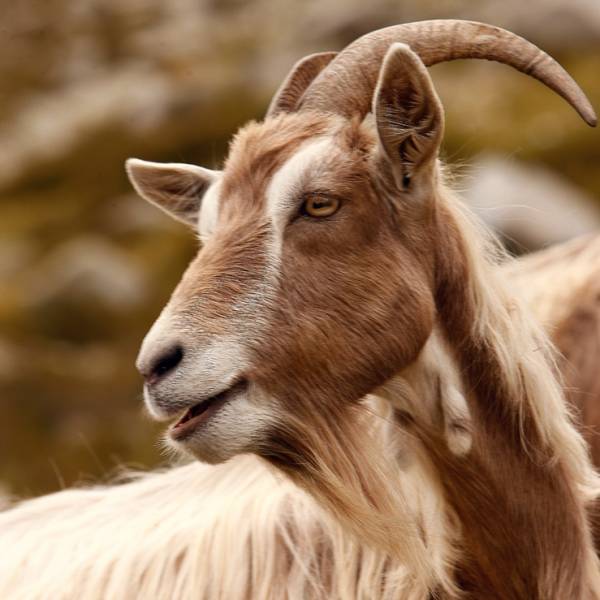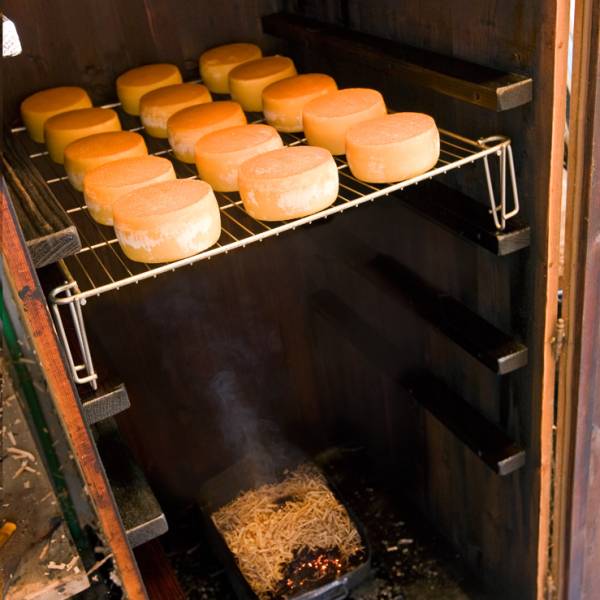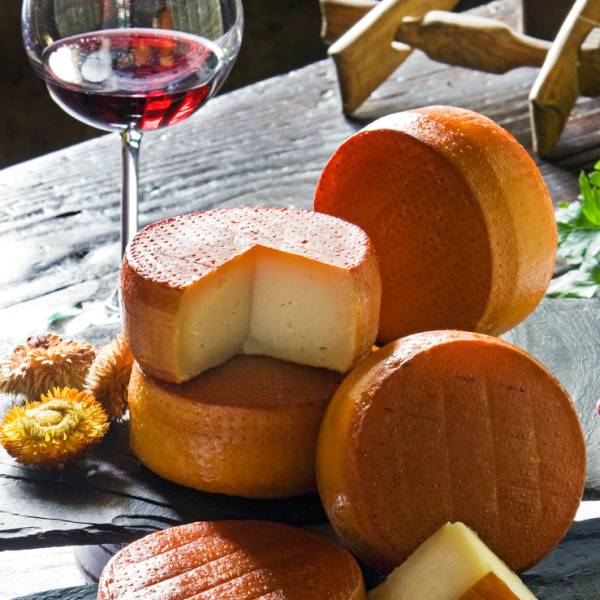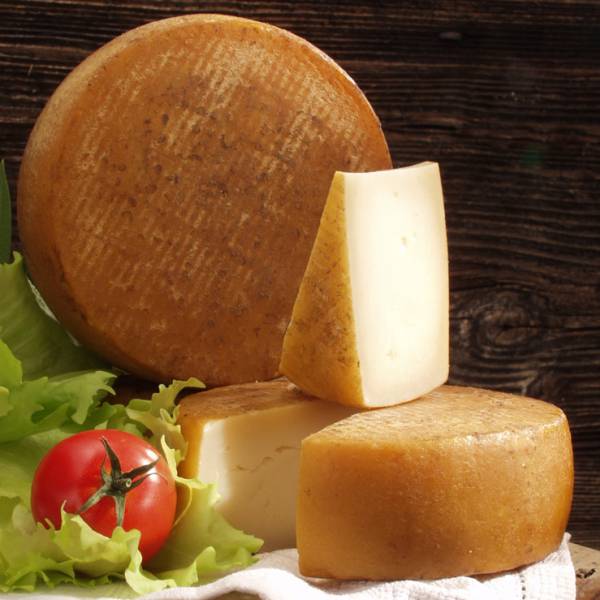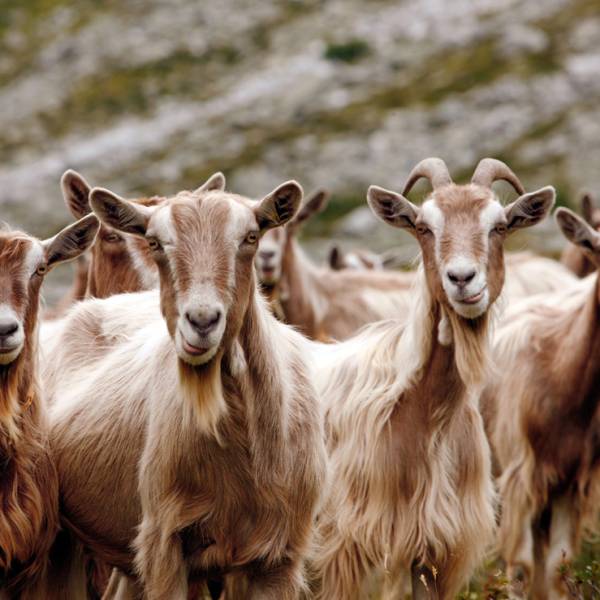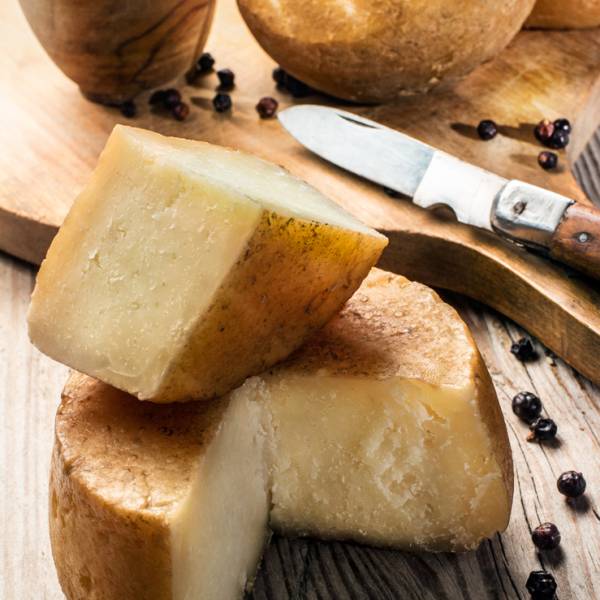Cheeses
FATULI'
Goat's milk cheese from raw Adamello blonde goat milk
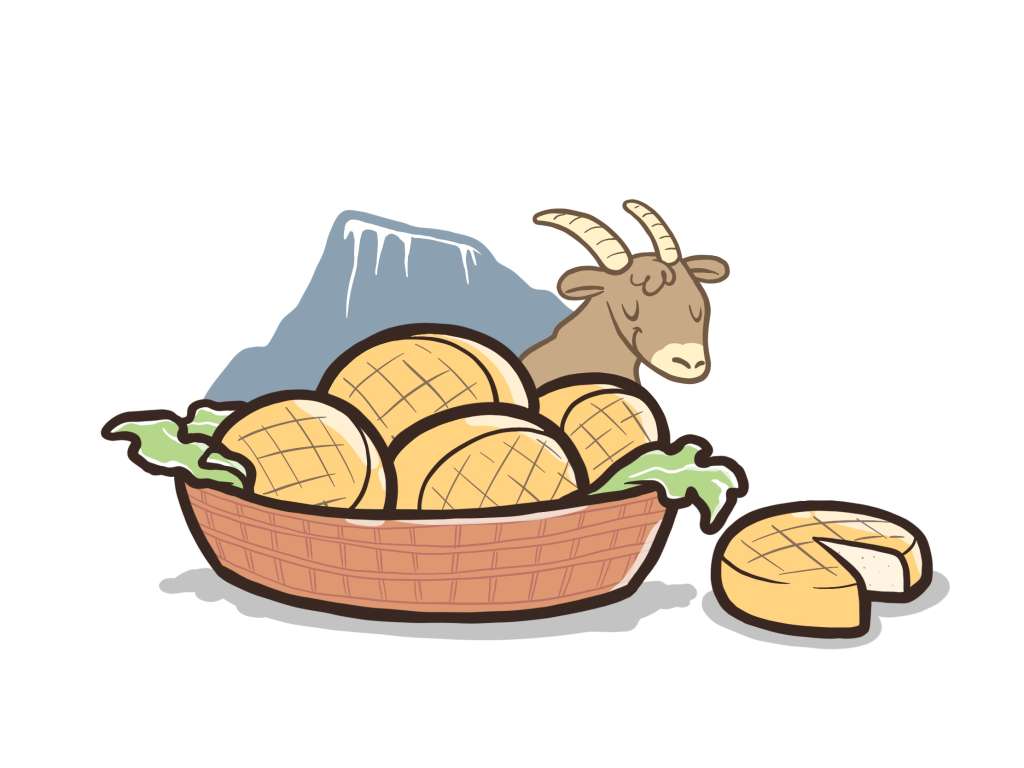
Cheeses
FATULI'
Goat's milk cheese from raw Adamello blonde goat milk
Fatulì is a goat cheese with ancient origins, today produced by a small number of breeders of the Adamello blonde goat, so called because of the colour of its coat, which is uniform with shades ranging from light brown to blonde, with two extended white streaks on the head, from the ears to the muzzle. It’s an ancient breed of which today only a small number of specimens survive.
The smoking process with juniper branches makes this cheese unique.
HISTORY
Fatulì was created in the shielings, high up in the Adamello mountains.
In the shielings, cheese was produced, left for the whey to drain onto soup plates and then left to dry over the fireplace, on which juniper branches were burnt, one of the few woody plants that grow on alpine pastures, above a certain altitude.
CHARACTERISTICS
Fatulì is small, flat and round, with an either pale yellow or intense and slightly holed paste. Its rind is dark and smoky.
Traditionally, it is made with dry salting and smoking with juniper branches.
The aging of Fatulì can vary from a minimum of 30 days to a maximum of six months, as tradition dictates. The long aging makes it harder and tastier.
In the past, Fatulì was consumed on its own, today this cheese is either used fresh as an accompaniment to seasonal salads or as an ingredient for the preparation of risotto and flans, or also aged as a grating cheese.
SEASONALITY
The production of Fatulì is linked to the availability of goat milk, from spring to late autumn, after which the goats need to rest before giving birth in spring.
ANECDOTES
The term fatulì, in dialect, means "small cheese".
It is said, in fact, that its small size can be traced back to the habit of farmers using soup plates as a mould, but it was also convenient, to easily transport the cheese to the pastures, where its size made it possible to eat it without leaving any leftovers.
The current use of a smoking grate leaves some characteristic grooves on the rind, which make it recognisable. This cheese is also a Slow Food Presidium.

